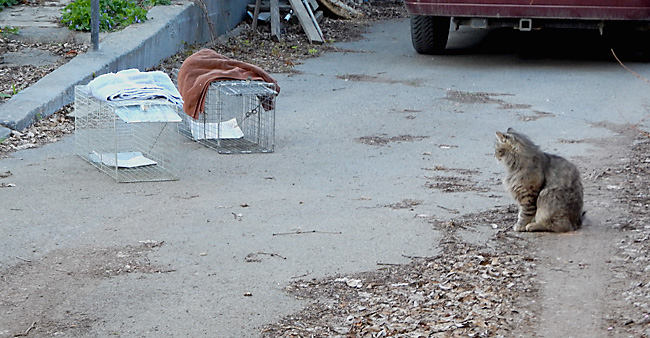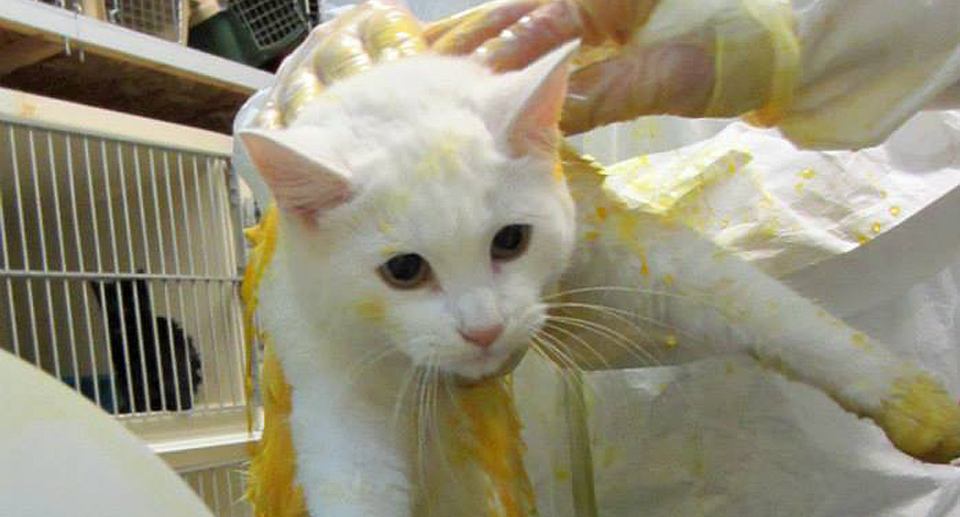
“There goes Felix.”
The orange tabby sniffs around two cat traps and begins nibbling at the pieces of food scattered around the entrances that are supposed to tempt other ferals to enter the wire cages.
From her SUV parked a dozen metres or so down the driveway of the house where she’s set the traps, Kamloops and District Humane Society executive director Barb Zibrik watches. And waits. And watches and waits.

